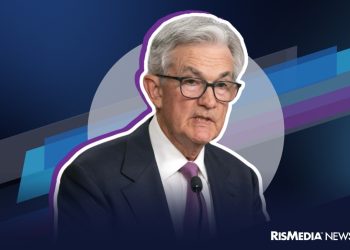Another variable has been added to the turbulent U.S. banking system equation as First Republic Bank has become the latest casualty in a trend that has many questioning the health of the nation’s banks.
While many are reeling following the demise and subsequent sale of the San Francisco-based bank, onlookers and pundits in the real estate industry are speculating on the potential impacts that another bank failure can have ahead of the highly anticipated Federal Reserve meeting on May 2-3.
“First Republic Bank is the third bank failure in two months, raising new questions about the health of the banking industry and the potential implications for the housing market,” says Dr. Lisa Sturtevant, chief economist at Bright MLS. “Before the First Republic situation intensified, it was presumed that the Fed would decide to raise rates again when it meets tomorrow and Wednesday. But the bank’s collapse might have changed the calculus, raising the possibility that the Fed will pause rate hikes.”
The Federal Deposit Insurance Corporation (FDIC) seized control of First Republic Bank over the weekend after a tumultuous week for the company and its stocks. Following a competitive bidding process, regulators struck a deal to sell a defunct bank to JPMorgan Chase, announcing its acquisition Monday.
“Our government invited us and others to step up, and we did,” said Jamie Dimon, chairman and CEO of JPMorgan Chase, in a statement. “Our financial strength, capabilities and business model allowed us to develop a bid to execute the transaction in a way to minimize costs to the Deposit Insurance Fund.”
Based on a company statement, JPMorgan will assume all of First Republic’s $92 billion in deposits—insured and uninsured—and will purchase most of the bank’s assets, including nearly $173 billion in loans and $30 billion in securities.
Other elements of the agreement include the FDIC providing loss share agreements covering acquired single-family residential mortgage and commercial loans as well as $50 billion of five-year, fixed-rate term financing.
While its downfall came months after the collapse of Silicon Valley Bank (SVB) and Signature Bank, Melissa Cohn, regional vice president of William Raveis Mortgage, suggests that First Republic’s turmoil is tied to recent struggles that crumbled its contemporaries.
“We have to remember that First Republic’s DNA was very much similar to Silicon Valley Bank in the sense that they tailored to a sort of narrowly focused group of depositors and clients, that they made a lot of below market mortgages, that they had a lot of mortgage-backed securities,” she says.
Like SVB, First Republic Bank got hit hard by a wave of customers pulling their money from their accounts in March. Though the latter lost $100 billion in deposits then, it didn’t crumble like its contemporaries, thanks primarily to a $30 billion lifeline from 11 banks that kept it afloat.
“This profile was similar to the Silicon Valley Bank, so it really shouldn’t be totally surprising that they had an issue, especially as rates have gone up over the past year,” Cohn says.
According to Sturtevant, the uncertainty caused by another bank collapse could lead to more cautiousness and increase the likelihood of an economic recession as purchase and investment activity pulls back.
“Like SVB and Signature Bank, First Republic’s collapse is not indicative of general frailties in the financial sector,” Sturtevant says. “However, the recent failure adds to the growing economic uncertainty being felt by businesses and consumers alike.”
It also raises questions regarding a pending decision at the Fed, which is faced with another bank failure as it meets to determine the trajectory regarding its efforts to reel in inflation with interstate rate hikes.
Officials raised interest rates by a quarter percent in March in the wake of the SVB and Signature Bank collapse, which pushed the federal funds rate between 4.75% and 5%.
The decision marked the ninth consecutive rate hike the Fed implemented since it embarked on its inflation-taming journey in March 2022. Pundits argued that issues in the banking sector are primarily tied to the past 14 months of rate hikes.
“Many small, local and regional banks are on the edge of collapse,” said Lawrence Yun, chief economist for the National Association of REALTORS®. “They were not required to do a stress test like the big banks and are showing mismanagement of interest rate risk.
“The sudden, rapid raising of the Fed’s funds rate has brought about tremendous financial stress on small banks,” he continues. “The overall bank lending environment is much tighter as a result.”
Fed officials hinted that an end to its rate hikes could be coming soon, but it’s still being determined when that will happen given the circumstances. Based on the meeting minutes of March’s Fed meeting, the potential pause on interest rate hikes was up for consideration following the two bank failures.
Ultimately, the rate hikes continued despite the woes in the financial sector. According to Wall Street Journal reports, the increases will likely continue this month as officials deliberate about a potential pause.
Cleveland Fed President Loretta Mester was quoted late last month as saying that the central bank is “much closer to the end of the tightening journey than the beginning.”
Cohn expects another 25 basis-point interest rate increase, pointing to inflation levels higher than the Fed’s target of 2% and a relatively strong economy as the primary reasons the Fed is likely to raise rates again.
“I think that the Fed’s hands are tied to raising rates by a quarter point,” Cohn says. “We’ve seen sort of a mixed bag of data. We’ve seen some signs of a weakening economy, but we’ve seen other signs of an economy that is still resilient to all of these rate hikes.”
With the Fed meeting again this week, Yun thinks that officials will need to consider the damage to small banks from its tightening monetary policy.
“The impact goes beyond the increase in the fed funds rate and means there are fewer loans by small banks to small businesses and for commercial real estate,” Yun says. “The Fed should understand this extra tightening impact and that consumer price inflation will be much calmer by the year’s end, from anticipated calming of rents due to robust apartment construction.
“The impact on homebuyers at the moment is minimal as they are only honing in on mortgage rates,” Yun adds. “The average rate appears to have already passed its recent 7% peak and is likely to head lower in the upcoming months—maybe to a low-6% range.”












